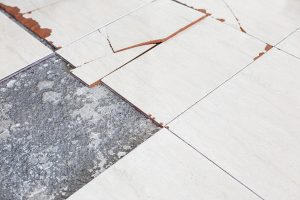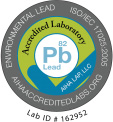 Asbestos is a naturally occurring silicate mineral. The mineral has exceptional insulating properties, and therefore it was popularly used in building materials up until the 1980s. However, the use of this mineral was curtailed after studies found that it contributed to various deadly diseases.
Asbestos is a naturally occurring silicate mineral. The mineral has exceptional insulating properties, and therefore it was popularly used in building materials up until the 1980s. However, the use of this mineral was curtailed after studies found that it contributed to various deadly diseases.
Exposure to asbestos fibers over a long period leads to an increased risk of developing asbestosis, pulmonary fibrosis, pleural plaques, malignant mesothelioma, stroke, and other cardiovascular diseases.
But how can you know whether your house contains asbestos-containing materials? Here are five tell-tale signs that could indicate the presence of asbestos-containing materials in your home.
1. Older Homes
Most homes built prior to 1980s contain materials with a high asbestos content. The mineral was commonly used in insulation around ducts, boilers, pipes, fireplaces, and sheeting. Also, it was used in many building components including:
- Ceiling tiles
- Floor tiles
- Roof shingles
- Siding
- Pipe cement
You can get exposed to asbestos if the building materials containing asbestos get damaged or broken in any way. So, it’s important that you get your house tested for asbestos if it was constructed before the 1980s.
2. Vinyl Flooring or Sheeting
Vinyl flooring tiles with millboard or paper were often made of asbestos. The probability is higher if your flooring was installed between 1952 and 1986. Consider getting the house tested for asbestos if that is the case.
3. Corrugated Roofing
Corrugated roofing sold from the 1920’s through the 1970’s contained asbestos. The cement roof shingles usually contain Chrysotile, which is also known as white asbestos.
4. Cement Sheets
Cement sheets in older houses also most likely contain asbestos. Some of the areas around the sheets that may contain asbestos include light bases, cover traps, and vent covers. An asbestos testing and abatement company can help determine whether the sheets contain asbestos.
5. Cement Water Tanks
The asbestos content in water tanks in older homes is generally 5 to 10 percent. If your home has one, you should consider getting your cement water tank tested for asbestos and get it replaced, if damaged.
It is interesting to note that the manufacture, importation, processing and distribution in commerce of the following products, as well as some others not listed, are not banned in the United States according to the EPA website:
- Cement corrugated sheet
- Cement flat sheet
- Clothing
- Pipeline wrap
- Roofing felt
- Vinyl floor tile
- Cement shingle
- Millboard
- Cement pipe
- Automatic transmission components
- Clutch facings
- Friction materials
- Disk brake pads
- Drum brake linings
- Brake blocks
- Gaskets
- Non-roofing coatings
- Roof coatings
How to Test for Asbestos at Home?
Asbestos materials used in older houses generally don’t have any labels. Only microscopic testing of samples can help reveal the presence of asbestos. And this is something that can only be done in a laboratory by a trained professional. You should not attempt to collect samples for asbestos testing on your own.
If you need help locating an asbestos testing consultant we can help. For analysis of materials to determine if asbestos is present, you should contact SanAir Technologies laboratory. We make use of advanced airborne fiber analysis tests such as Phase Contrast Microscopy (PCM), Polarized Light Microscopy (PLM), and Transmission Electron Microscopy (TEM). Contact us today for professional asbestos testing by dialing (804) 897-1177.












